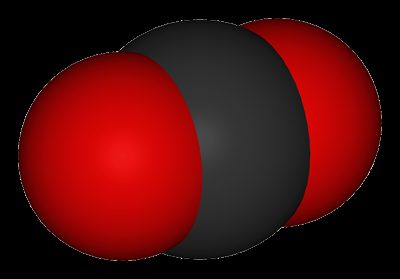Carbon dioxide, or dioxide - synonymous names for well-known carbon dioxide. According to the chemical classification, this substance is carbon monoxide (IV), CO 2 . Under normal conditions, this compound is in a gaseous state, has no color and odor, but has a sour taste. It is soluble in water, thus forming carbonic (carbonate) acid. A feature of carbon dioxide is that at normal atmospheric pressure (101 325 Pa or 760 mm Hg) it does not exist in a liquid state, but only in the form of gas or the so-called dry ice. Liquid carbon dioxide can only form if atmospheric pressure is increased. In this form, it can be transported in cylinders and used for its intended purpose: for welding, production of carbonated drinks, freezing and cooling food and fire extinguishers. This substance is also used as a preservative E 290, a baking powder for dough and refrigerant.

Carbon dioxide is an acid oxide, therefore, it can interact with alkalis and basic oxides, forming salts - carbonates or bicarbonates and water. A qualitative reaction to the determination of CO 2 is its interaction with calcium hydroxide. The turbidity of the solution and the formation of sediment will indicate the presence of this gas. Some alkali and alkaline earth metals (active) can burn in the atmosphere of carbon dioxide, taking oxygen from it. Carbon dioxide also enters into chemical reactions of substitution and addition with
organic elements.
It is found in nature and is part of the air shell of the Earth. Living organisms secrete it into the environment during respiration, and plants absorb it during photosynthesis and use it in physiological and biochemical processes.
Due to its high heat capacity, in comparison with other atmospheric gases, carbon dioxide with an increase in concentration in the environment leads to its overheating, due to less heat transfer to outer space. And an increase in temperature leads to the melting of glaciers and, as a result, climate change on the globe. Scientists have calculated and concluded that in solving this problem (in the fight against the greenhouse effect), green plants can help, which can absorb much more CO2 than it is emitted now.
Despite the fact that carbon dioxide is involved in the metabolism of plants and animals, its increased content in the atmosphere can cause drowsiness, weakness, headache, and even suffocation. To avoid hypercapnia, it is necessary to ventilate the premises, especially in places where a large number of people gather.
Thus, carbon dioxide is an acid oxide that is found in nature and is a product of the metabolism of flora and fauna. Its accumulation in the atmosphere is the trigger for the greenhouse effect. Carbon dioxide reacts with water to form unstable carbonic acid, which can decompose into water and CO2.